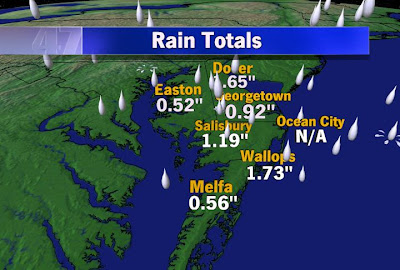
What's interesting about Tropical Storm Arthur, is not only was he the first tropical storm for the Atlantic Hurricane Season, this same system was also previously know as "Alma." That's right, this storm was also the first tropical system for the Eastern Pacific Hurricane Season. Alma made landfall, weakening and crossing Honduras, this system then reformed in the Atlantic, becoming Tropical Storm Arthur. Here is the five day forecast for this storm:

On Delmarva, the day started off with tornado watches around 10:30 a.m. We saw everything from tornado watches to warnings, to severe thunderstorm warnings and flash flood warnings.

So far, no tornado reports have come in for Delmarva, but not to far west, a tornado report from this same system came in for Garrett County, Maryland.
The tornado was an EF0. It had a path length of one and one half miles and a width of 80 yards. It had maximum winds of 80 mph. Two houses suffered damage, along with downed trees. One person was injured from flying glass during this tornado.
Back to Delmarva, so far there have only been wind and hail reports. Nickel sized hail was reported in Caroline County (Denton,) Downed trees were reported in Accomack (Atlanta) and Dorchester (Hurlock) counties and wires were down in Sussex County (Milton.)
Another interesting thing about this day: An F0 hit Accomack County back in 1962.
Finally, your rainfall totals from this system as of 11 p.m. Saturday.Wallops Island: 1.54"
Salisbury: 1.12"
Georgetown: 1.11"
Melfa: 0.56"
Dover: 0.46"



































 As you can see on the image below, a total of 27 tornadoes have been reported to the National Weather Service today.
As you can see on the image below, a total of 27 tornadoes have been reported to the National Weather Service today.




